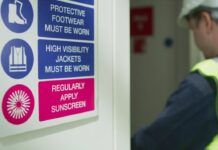 The installation of Cavity Wall Insulation (CWI) is well known for being difficult to monitor and, despite the industry responding with quality scheme updates, there are still cases of damp penetration in houses, allegedly due to faulty CWI.
The installation of Cavity Wall Insulation (CWI) is well known for being difficult to monitor and, despite the industry responding with quality scheme updates, there are still cases of damp penetration in houses, allegedly due to faulty CWI.
To address this issue, Kiwa has developed new approval schemes for injected systems and its installers, and has recently awarded BDA Agrément to system designers including Warmfill, Moulded Foams, Thermabead and Energystore. These documents are accessible via the website and readers can see that all relevant performance factors are assessed. These include thermal performance, resistance to moisture penetration, adequacy of fill, condensation risk and durability.
The installer must be approved by the system designer in the first instance, and there is an on-going rigorous and thorough independent check in the form of the Kiwa Installer Assessment and Surveillance Scheme to address installer competence via training and qualifications, as well as site practice all verified by site and office inspection.
Properties under consideration for CWI must be surveyed thoroughly before any material is installed. A detailed checklist form must be completed, looking at the exposure of the location, the layout of the property, details of its construction, chimneys and heat-producing appliances and type and position of the damp proof course. The age of the property should be established and the topography – the position of the property in relation to the area around it – must be described.
Considerable attention must be paid to defects in the property and questions asked if there is external or internal damp penetration, evidence of bulge or heave in any elevation. The condition of windows, doors and rainwater systems must be reported and any damage to render or defects in masonry, such as spalling, loose mortar joints or damage due to failed or failing services must be noted.
An assessment of the wind-driven rain conditions typically experienced by the property, using the guidance given in BS 8104 and relevant national Building Regulations, must be made. BRE Report 262; thermal insulation avoiding risks in walls up to 12m high should also be consulted. Gradings run from sheltered (less than 33 litres per rain spell) to very severe (100 or more litres per rain spell).
At survey stage, a borescope investigation must also be carried out, looking at the condition of the cavity. Is it clear and are the wall ties clean or covered with mortar snots, contributing to both thermal bridging and damp transfer from outer to inner leaf? Is there any existing insulation already, a batt or slab, and if so, what is its condition?
If the property is considered suitable for CWI, the surveyor will detail the drilling pattern from the System Designers’ Installation Guide and determine the volume of material required.
Once the installation has commenced, the leader of the team must document details of the fill material and equipment used, as well as on-site test data: for example, the box test to check material density. The installer must sign off the job once completed, declaring the work has been undertaken correctly and all required checks have been carried out.
All documentation is retained and is subject to audit by Kiwa inspectors.



